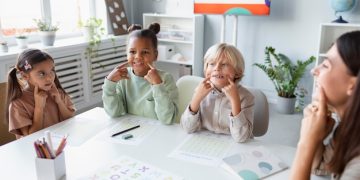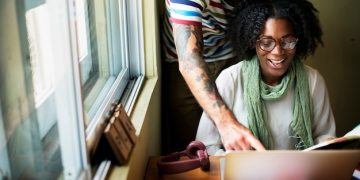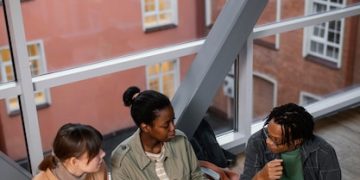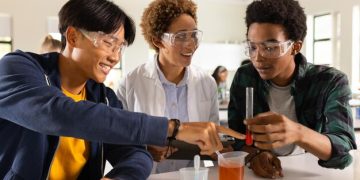The Impact of Social Media on Student Learning: Challenges & Opportunities

The Impact of Social Media on Student Learning: Challenges and Opportunities encompasses both the potential for enhanced educational experiences and significant distractions, affecting students’ academic performance and overall well-being.
The digital age has ushered in an era where social media is deeply interwoven into the fabric of student life. Understanding the impact of social media on student learning: challenges and opportunities is crucial for educators, parents, and students themselves to harness its benefits while mitigating its potential drawbacks.
Understanding Social Media’s Role in Education
Social media platforms have evolved from simple communication tools into complex ecosystems that can significantly influence various aspects of student life, including their academic performance and learning habits. Exploring the multifaceted role of social media in education is essential to understanding its true impact.
The Positive Aspects of Social Media in Learning
Social media offers several potential benefits for students when used responsibly and intentionally. From collaborative learning to access to information, these platforms can enhance the educational experience.
- Facilitating Collaborative Learning: Social media platforms enable students to connect with peers, share ideas, and work together on projects, fostering a sense of community and enhancing teamwork skills.
- Providing Access to Educational Resources: Many educational institutions and organizations use social media to share learning materials, announcements, and updates, making it easier for students to stay informed and access resources.
- Enhancing Communication and Engagement: Social media allows educators to engage with students outside the classroom, providing a platform for answering questions, offering support, and fostering a more interactive learning environment.
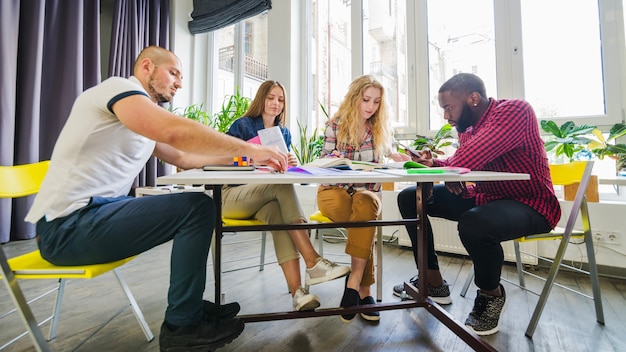
The integration of social media into education requires a balanced approach, maximizing its potential while minimizing its distractions. By promoting responsible usage and providing guidance, educators can help students harness the power of social media for academic success.
The Dark Side: Challenges and Potential Dangers
While social media offers potential benefits to students, it also poses significant challenges that must be addressed to ensure a healthy and productive learning environment. Understanding these challenges is the first step in mitigating their effects.
Distraction and Reduced Attention Spans
One of the most significant drawbacks of social media is its potential to distract students from their studies. Notifications, updates, and endless streams of content can divert attention away from academic tasks.
- Constant Notifications and Alerts: The constant stream of notifications from social media platforms can interrupt study sessions and make it difficult for students to concentrate on academic work.
- Short Attention Spans: The rapid-fire nature of social media content can lead to shorter attention spans, making it harder for students to focus on in-depth reading or complex problem-solving.
- Multitasking Pitfalls: Many students believe they can effectively multitask by using social media while studying, but research suggests that multitasking actually reduces productivity and impairs comprehension.
To combat these challenges, students need to develop self-discipline and time management skills. Educators and parents can also play a role by setting clear expectations for social media usage and providing strategies for staying focused on academic tasks.
Impact on Academic Performance and Mental Health
The effects of social media extend beyond mere distraction and can significantly impact both academic performance and students’ mental health. Examining these broader consequences is crucial for developing holistic strategies to support students’ well-being.
Increased anxiety and depression, poor grades due to inability to completely concentrate in the classroom, and lack of sleep due to midnight scrolling are real.
Students can face challenges such as anxiety and depression, if they spend too much time of social media comparing their lives to the fabricated realities of others.
The overuse of social media can negatively impact students’ academic journey and their overall mental state. A big part of making sure our young ones make the right decisions is ensuring they are equipped to do so.
Strategies for Balancing Social Media and Learning
Finding a healthy balance between social media usage and academic pursuits is essential for student success. Implementing effective strategies can help students harness the benefits of social media while minimizing its negative impacts.
Setting Time Limits and Boundaries
Establishing clear boundaries for social media usage is a crucial step in promoting healthy habits. By setting time limits and designating specific times for social media, students can prevent it from encroaching on their study time.
- Using App Timers: Many smartphones and apps have built-in timers that allow users to set daily limits for social media usage.
- Designating Tech-Free Zones: Creating tech-free zones, such as the study area or bedroom, can help students focus on academic work without the temptation of social media.
- Scheduling Social Media Breaks: Instead of constantly checking social media, students can schedule specific breaks throughout the day to catch up on updates and connect with friends.

By implementing these strategies, students can regain control over their social media usage and create a more balanced and productive learning environment. Educators and parents can support these efforts by providing guidance and encouragement.
Leveraging Social Media Positively for Education
Instead of viewing social media as a purely negative influence, educators and students can harness its power for positive learning experiences. By using these platforms intentionally, students can enhance their academic pursuits.
Creating a Facebook group or a group chat on WhatsApp for a specific class, or all the students in the program can make it easier to make announcements and create group discussions related to the class.
Instagram can be used to create study flashcards, quizzes, short videos of teaching concepts, or to share relevant, helpful content from external resources.
For students who may be geographically separated, if from different cities or different countries, these platforms can help them share ideas, research information, and create projects together. These digital spaces promote better communication, and keep them connected to their instructors.
The Future of Social Media in Education
As technology continues to evolve, the role of social media in education is likely to expand. Exploring the potential future trends and considering the implications for both students and educators is essential to preparing for the challenges and opportunities ahead.
AI-powered educational tools that analyze student behavior on social media to identify learning gaps and provide personalized support are already being tried and tested.
There will be a shift towards more immersive and interactive learning experiences, such as virtual reality (VR) and augmented reality (AR), integrated within social media platforms.
Ethical considerations, concerns about data privacy, and mental health issues will shape the way social media is integrated into education. Laws and guidelines will influence how and what is used by students, and teachers.
| Key Point | Brief Description |
|---|---|
| 👍 Benefits of Social Media | Collaborative learning, access to resources, and enhanced communication. |
| 🤯 Challenges of Social Media | Distraction, reduced attention spans, and potential for mental health issues. |
| ⚖️ Balancing Social Media | Setting time limits, tech-free zones, and scheduled breaks for responsible use. |
| 🚀 Future Trends | AI, VR/AR integration, greater focus on ethical considerations. |
Frequently Asked Questions
Social media can significantly reduce focus due to constant notifications and the temptation to multitask, making it difficult for students to concentrate on their studies.
Social media can promote collaborative learning, provide access to educational resources, and enhance communication between students and educators outside the classroom.
Students can balance social media and studying by setting time limits, creating tech-free zones, and scheduling specific breaks for social media usage.
Parents can help manage their children’s social media use by setting clear expectations, monitoring online activity, and providing guidance on responsible digital citizenship.
Future trends include AI-powered learning tools, integration of VR/AR technologies, and a greater emphasis on ethical considerations and data privacy in educational settings.
Conclusion
In conclusion, the impact of social media on student learning: challenges and opportunities is a double-edged sword. While offering unprecedented access to information and fostering collaboration, it also presents significant challenges related to distraction, mental health, and academic performance. By understanding these dynamics and implementing effective strategies for balancing social media usage with academic pursuits, students, educators, and parents can harness the potential benefits of these platforms while mitigating their negative impacts, ensuring a more balanced and successful educational journey.
